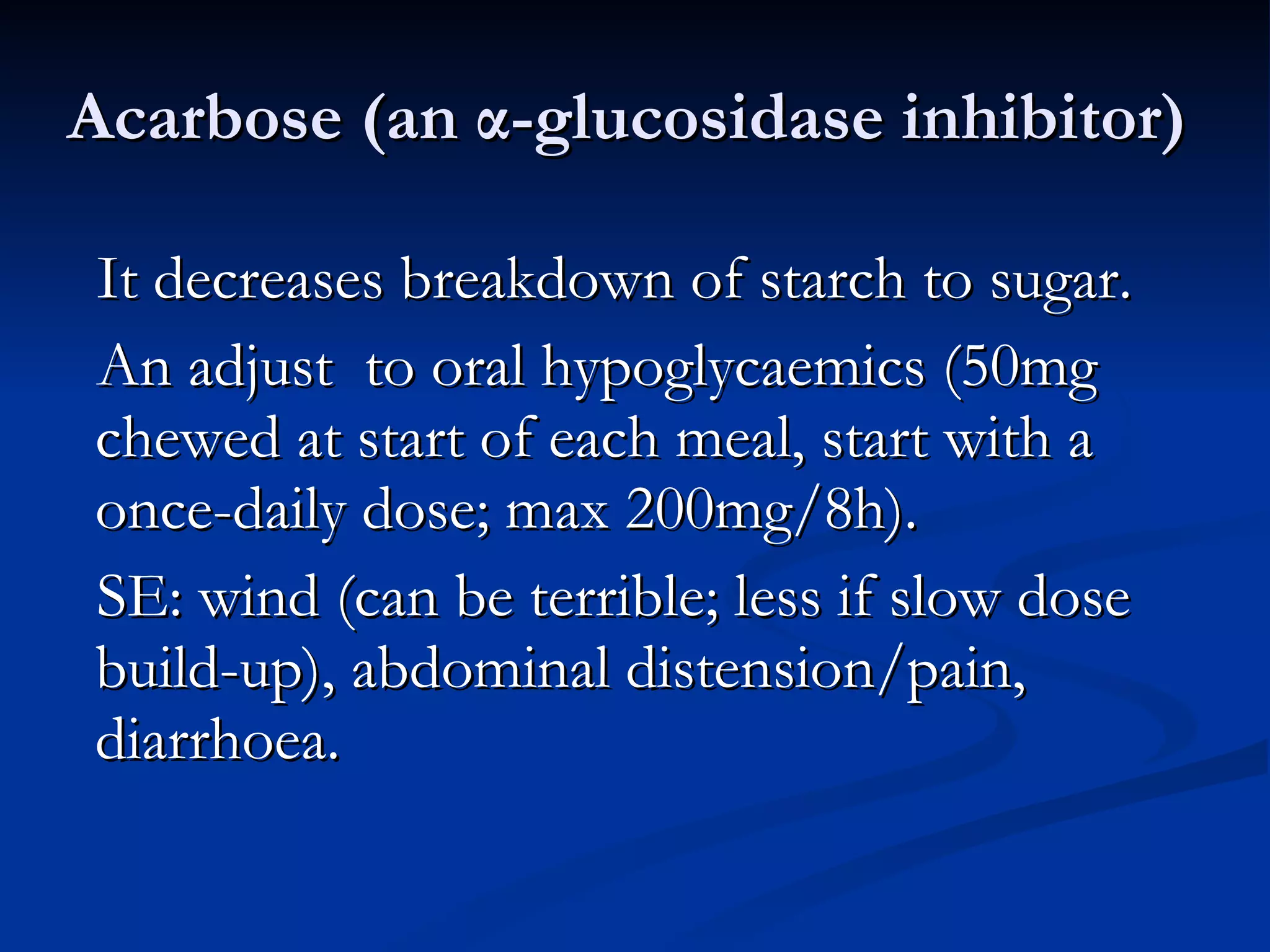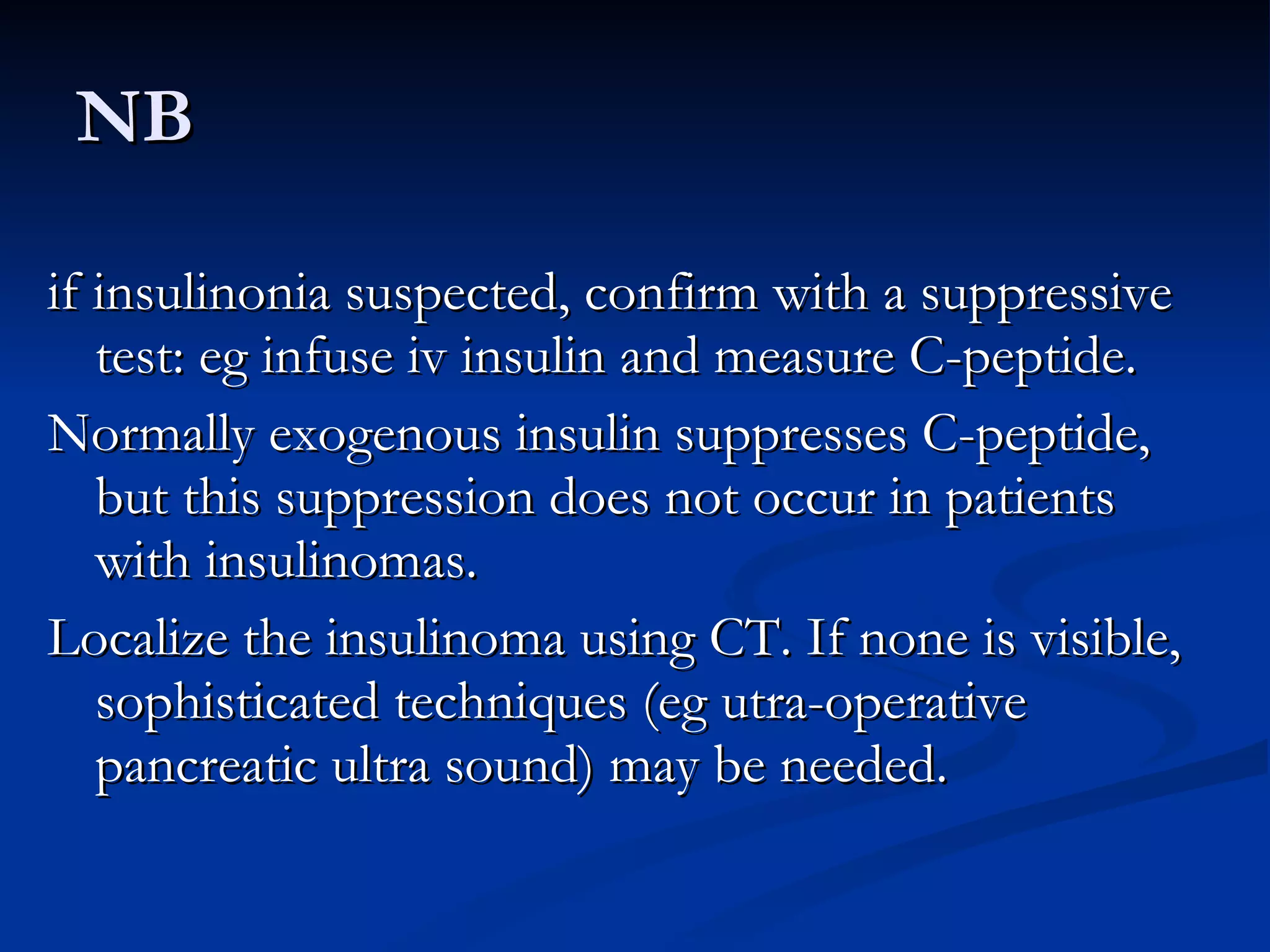This document provides a summary of diabetes mellitus (DM), including its definition, presentation, classifications, complications, investigations, and management. DM results from lack of or diminished insulin effectiveness and is characterized by hyperglycemia. There are two main types: type 1 DM is insulin-dependent while type 2 DM is non-insulin dependent initially but may eventually require insulin. Complications can include infections, neuropathy, retinopathy, and vascular diseases. Management involves lifestyle changes like diet and exercise as well as medications and insulin to manage blood glucose levels and prevent complications.



















































































